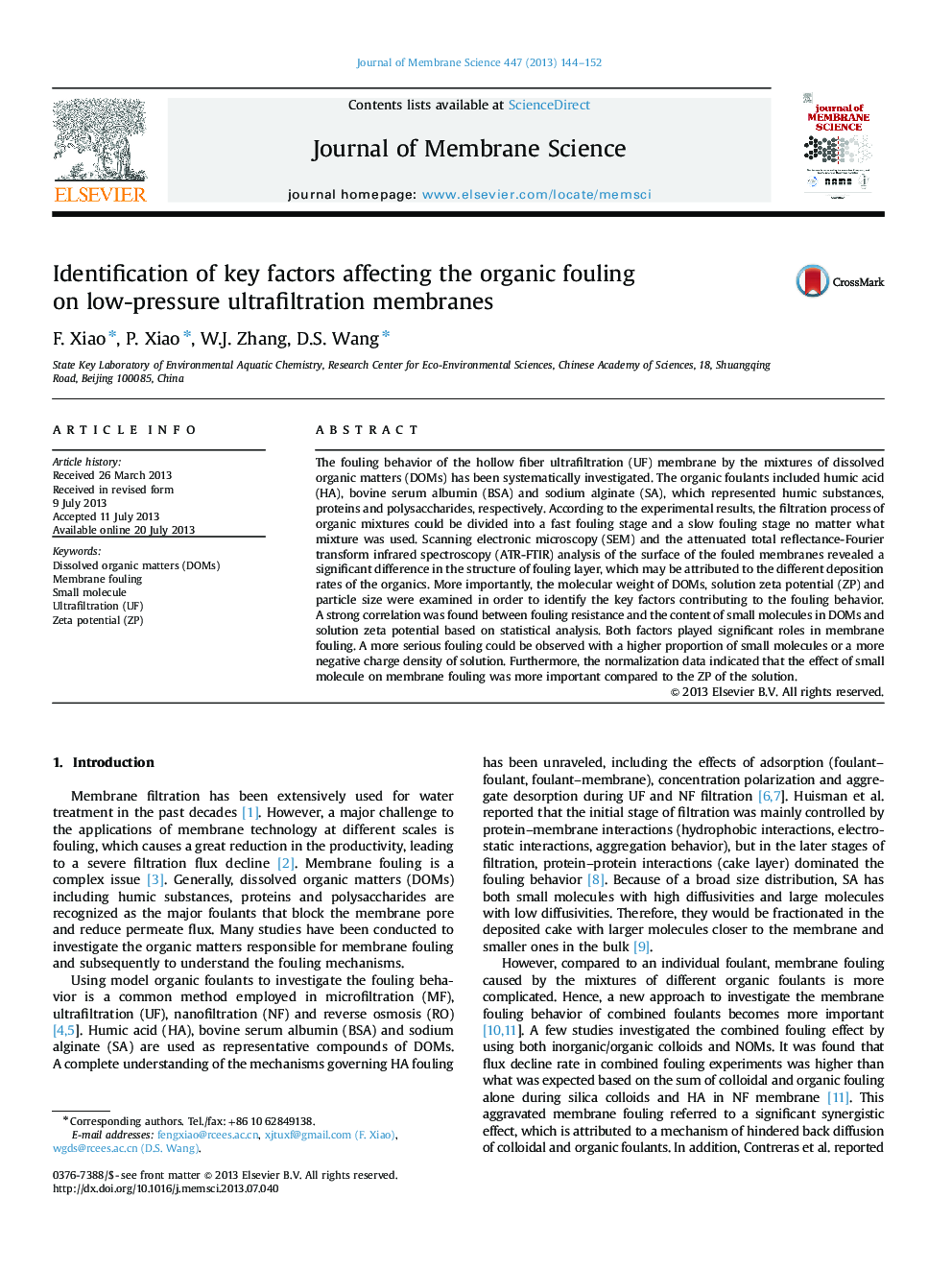| Article ID | Journal | Published Year | Pages | File Type |
|---|---|---|---|---|
| 634221 | Journal of Membrane Science | 2013 | 9 Pages |
•The key factors contributing to low-pressure ultrafiltration membrane fouling behavior by organic mixtures were identified.•Variation of fouling resistance was divided into a fast increasing stage and a slow one regardless of the mixtures.•Rf can be directly related to both small organic molecules and the solution ZP.•The fraction of small organic molecules is more important for organic fouling.
The fouling behavior of the hollow fiber ultrafiltration (UF) membrane by the mixtures of dissolved organic matters (DOMs) has been systematically investigated. The organic foulants included humic acid (HA), bovine serum albumin (BSA) and sodium alginate (SA), which represented humic substances, proteins and polysaccharides, respectively. According to the experimental results, the filtration process of organic mixtures could be divided into a fast fouling stage and a slow fouling stage no matter what mixture was used. Scanning electronic microscopy (SEM) and the attenuated total reflectance-Fourier transform infrared spectroscopy (ATR-FTIR) analysis of the surface of the fouled membranes revealed a significant difference in the structure of fouling layer, which may be attributed to the different deposition rates of the organics. More importantly, the molecular weight of DOMs, solution zeta potential (ZP) and particle size were examined in order to identify the key factors contributing to the fouling behavior. A strong correlation was found between fouling resistance and the content of small molecules in DOMs and solution zeta potential based on statistical analysis. Both factors played significant roles in membrane fouling. A more serious fouling could be observed with a higher proportion of small molecules or a more negative charge density of solution. Furthermore, the normalization data indicated that the effect of small molecule on membrane fouling was more important compared to the ZP of the solution.
Graphical AbstractFigure optionsDownload full-size imageDownload high-quality image (68 K)Download as PowerPoint slide
